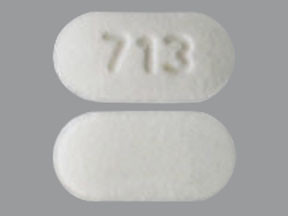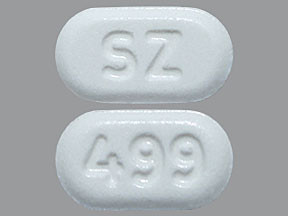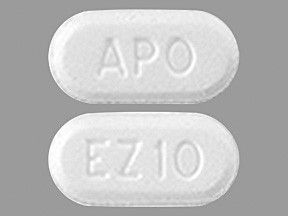EZETIMIBE - ORAL
PHONETIC PRONUNCIATION: (eh-ZET-ih-mibe)
COMMON BRAND NAME(S): Zetia
GENERIC NAME(S): ezetimibe
Uses
USES: Ezetimibe is used along with a low cholesterol/low fat diet and exercise to help lower cholesterol in the blood. Ezetimibe may be used alone or with other drugs (such as "statins" or fibrates). Ezetimibe works by reducing the amount of cholesterol your body absorbs from your diet. Reducing cholesterol may help prevent strokes and heart attacks.
How to use EZETIMIBE - ORAL
HOW TO USE: Read the Patient Information Leaflet if available from your pharmacist before you start taking ezetimibe and each time you get a refill. If you have any questions, ask your doctor or pharmacist. Take this medication by mouth as directed by your doctor, usually once daily with or without food. The dosage is based on your medical condition and response to treatment. If taking a bile acid sequestrant (such as cholestyramine, colestipol), take ezetimibe at least 2 hours before or 4 hours after taking the bile acid sequestrant. These products may bind to ezetimibe, preventing your body from fully absorbing the drug. Take this medication regularly to get the most benefit from it. To help you remember, take it at the same time each day. It is important to continue taking this medication even if you feel well. Most people with high cholesterol do not feel sick. It may take up to 2 weeks before you get the full benefit of this drug.
Side Effects
Precautions
Interactions
Overdose
Images
Reviews
Faq for EZETIMIBE - ORAL
Ezetimibe is an oral medication used to lower cholesterol levels in the blood. It is commonly prescribed to patients who have high levels of LDL cholesterol (also known as "bad" cholesterol).
Ezetimibe works by inhibiting the absorption of cholesterol from the intestine. It blocks a protein called NPC1L1, which is responsible for allowing cholesterol to be taken up from the diet and bile into the bloodstream.
The common side effects of Ezetimibe include muscle pain or weakness, stomach pain, diarrhea, tiredness, and headache. However, not everyone experiences these side effects, and they are generally mild.
Ezetimibe is often used in combination with a statin medication to further reduce cholesterol levels. However, in some cases, Ezetimibe may be prescribed as a monotherapy if the patient cannot tolerate or has contraindications to statins.
Ezetimibe begins to lower cholesterol levels within a few hours of taking the first dose. However, it may take several weeks to see the full benefits, as cholesterol levels are typically re-evaluated after a few months of treatment.
Ezetimibe is not recommended during pregnancy as its safety for unborn babies has not been established. Women who are pregnant or planning to become pregnant should consult their healthcare provider for alternative cholesterol-lowering options.
No, Ezetimibe is not a blood thinner. It does not affect the blood's clotting mechanism or thin the blood. Its primary action is to reduce cholesterol absorption in the body.
It is generally recommended to avoid consuming grapefruit or grapefruit juice while taking Ezetimibe, as it may increase the levels of Ezetimibe in the blood, leading to potential side effects. However, it is best to consult your healthcare provider for specific instructions.
It is important not to discontinue Ezetimibe suddenly without consulting your healthcare provider. Abruptly stopping the medication may cause a rebound effect, resulting in a rapid increase in cholesterol levels. Always discuss any changes in your medication regimen with your doctor.
Disclaimer
IMPORTANT: HOW TO USE THIS INFORMATION: This is a summary and does NOT have all possible information about this product. This information does not assure that this product is safe, effective, or appropriate for you. This information is not individual medical advice and does not substitute for the advice of your health care professional. Always ask your health care professional for complete information about this product and your specific health needs.



No Reviews Yet